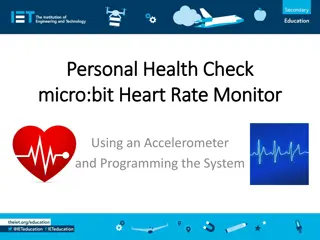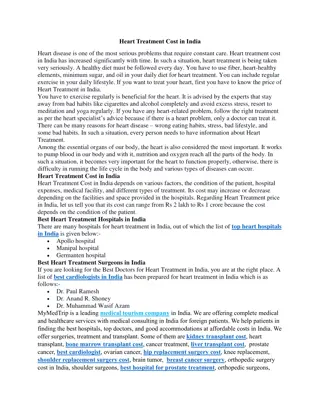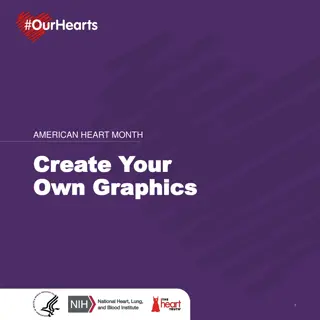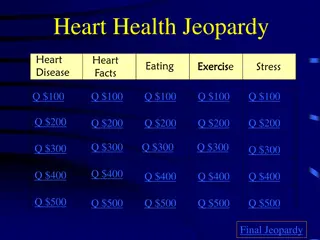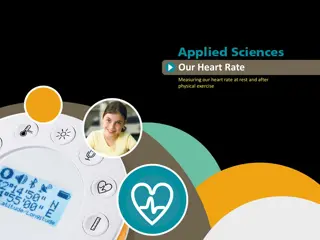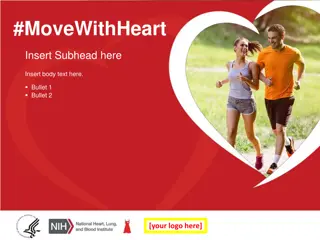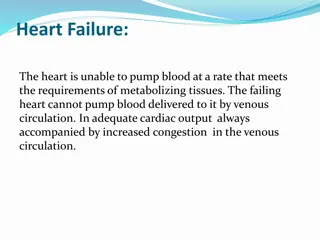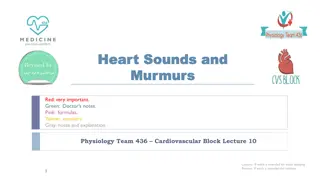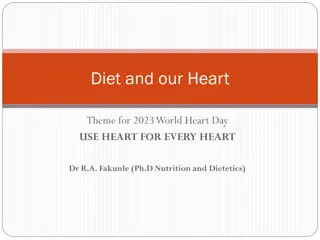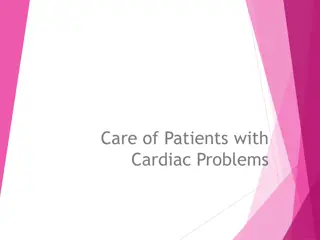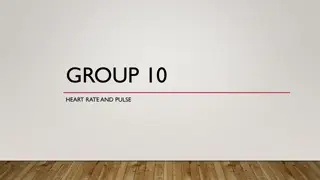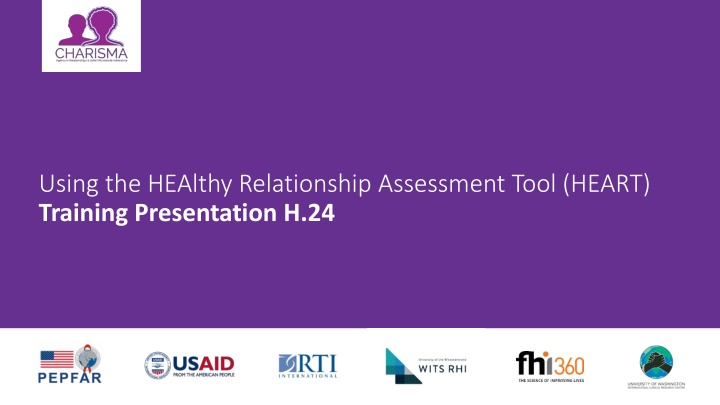
The HEART Healthy Relationship Assessment Tool
Explore the HEART Healthy Relationship Assessment Tool, which helps assess potential support, resistance, or violence in intimate partner relationships. Learn how to use this tool to determine counseling needs and HIV prevention readiness.
Download Presentation

Please find below an Image/Link to download the presentation.
The content on the website is provided AS IS for your information and personal use only. It may not be sold, licensed, or shared on other websites without obtaining consent from the author. If you encounter any issues during the download, it is possible that the publisher has removed the file from their server.
You are allowed to download the files provided on this website for personal or commercial use, subject to the condition that they are used lawfully. All files are the property of their respective owners.
The content on the website is provided AS IS for your information and personal use only. It may not be sold, licensed, or shared on other websites without obtaining consent from the author.
E N D
Presentation Transcript
Using the HEAlthy Relationship Assessment Tool (HEART) Training Presentation H.24
What is the HEART? HEART stands for HEA filled out on paper or on a tablet by a lay counselor or suitably trained staff member to sensitively: Understand whether a woman might expect SUPPORT, RESISTANCE, or VIOLENCE from a partner if she uses PrEP Determine the type of counseling that can help a woman safely and effectively use PrEP to protect herself against HIV Determine a woman s need for further counseling and support services for intimate partner violence HEAlthy R Relationship Assessment T Tool. It can be
Lets look at the HEART What you will notice first: Simple instructions for you, including asking clients to think about their main sexual or intimate partner when responding to questions Visual diagram to guide responses that can be shared with clients Five sections that cover: (1) traditional values, (2) partner support, (3) partner abuse and control, (4) partner resistance to HIV prevention, and (5) HIV prevention readiness Each section has multiple questions (from 5 10) Some questions are scored from 1 6, while others are scored from 6 1; this will be explained shortly A box on the last page shows how to score each section (on a computer or tablet, scores will calculate automatically)
Responses in the HEART FIRST ASK Do you generally Disagree or Agree? THEN ASK How much? A lot, somewhat, or a little?
Some items are worded positively; others are not Rows 2 5 are scored 6 (disagree a lot) to 1 (agree a lot) Rows 1 and 6 are scored from 1 (disagree a lot) to 6 (agree a lot)
Filling out the form 1. Based on the client s response, circle the score 2. Write the score for each item in the last column 3. If someone refuses to answer a question, leave it blank* 4. Add all scores for the TOTAL SCORE for each section 3 3 4 4 5 5 5 5 3 3 5 5 5 5 30 30
Aligning the scores to the modules Refers to Partner Abuse and Control section of the HEART
Aligning the scores to the modules 1. The final decision about which module to use (B, C, or D) will be made after you complete Module A. 2. During Module A, listen for additional information about her relationship that will help you decide which counseling module (B, C, or D) to use. 3. If time is extremely limited, complete only the Partner Abuse and Control section of the HEART.
Questions? and your thoughts?



